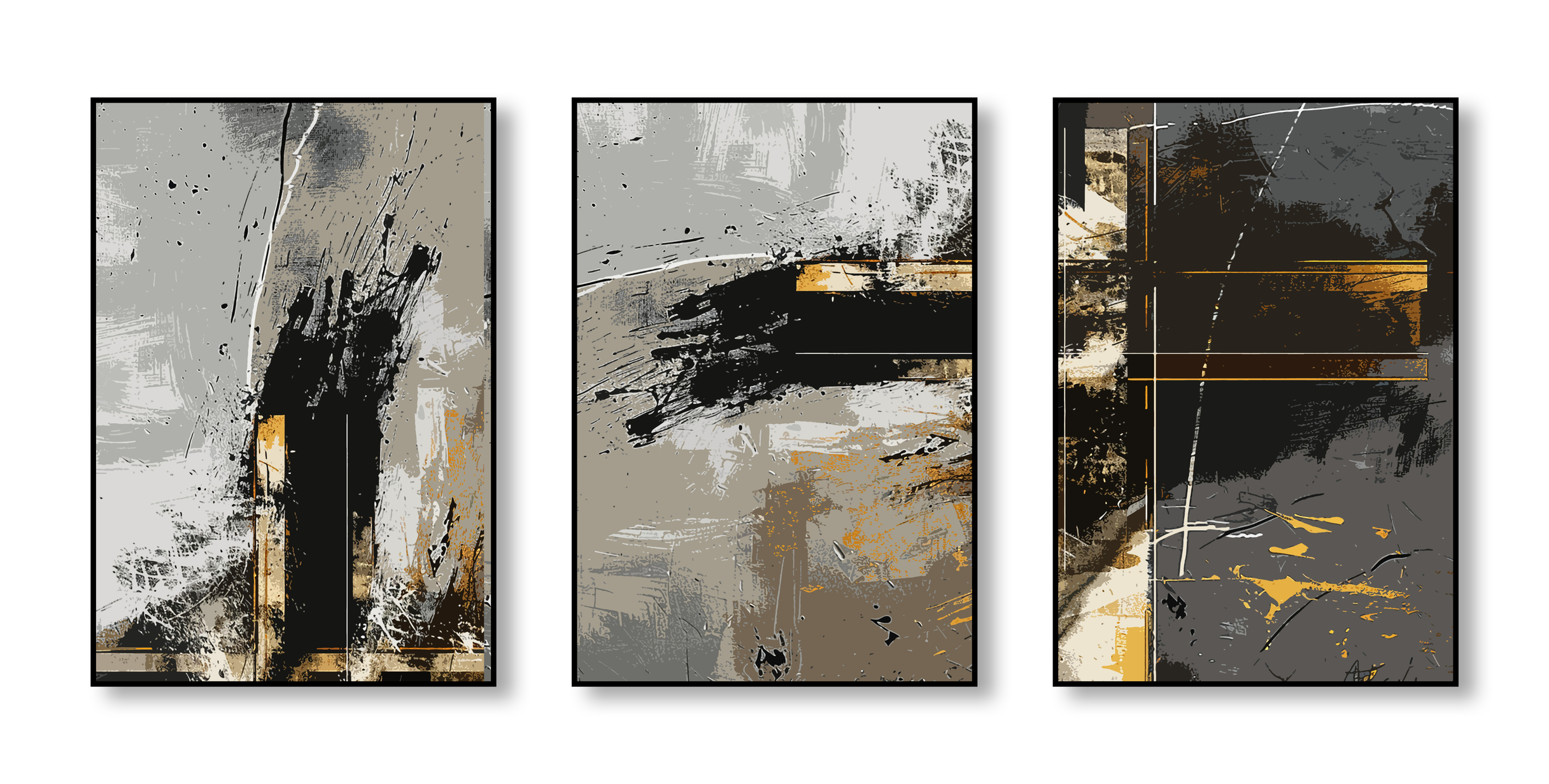Abstract art is a revolutionary movement that broke away from traditional representation, focusing on emotions, ideas, and pure visual expression rather than realistic depictions. By emphasizing form, color, and composition, abstract artists redefined the boundaries of art, paving the way for modern interpretations in mediums like acrylic glass, metal prints, and canvas art. To truly appreciate the depth and legacy of this movement, let’s delve into its origins in the late 19th and early 20th centuries, a time of rapid advancements in thought, technology, and society.
The Late 19th Century: The Foundation of Abstraction
The seeds of abstract art were sown in the late 1800s, a period of dramatic cultural and scientific transformation. Impressionism, led by artists like Claude Monet and Édouard Manet, challenged the rigid conventions of realism by emphasizing light, atmosphere, and color over precise detail.
Simultaneously, the advent of photography raised an important question: if cameras could capture reality with precision, what purpose did traditional realism in painting serve? This led artists to explore new frontiers of creativity, shifting their focus from replicating the physical world to expressing emotions, spiritual ideas, and universal truths. This shift laid the foundation for the abstract movement and influenced the development of modern mediums such as canvas art and acrylic glass prints.
The Early 20th Century: The Rise of Abstract Art
As the 20th century began, abstraction gained momentum, particularly in Europe. Several key figures emerged as pioneers of the movement, shaping its evolution:
1. Wassily Kandinsky: The Music of Color
Widely considered one of the founding figures of abstract art, Wassily Kandinsky believed that painting, much like music, could exist independently of recognizable subjects. His masterpiece Composition VII (1913) exemplifies this philosophy, with its vibrant interplay of color and dynamic forms that evoke emotion without depicting reality.
2. Piet Mondrian: Geometry and Harmony
Piet Mondrian introduced a minimalist approach to abstraction through his De Stijl movement, which focused on geometric shapes, primary colors, and structured compositions. His famous grid-based artworks represent a quest for balance and order, and today, his aesthetic is often reimagined in modern wall art, including metal prints and canvas designs.
3. Kazimir Malevich: Suprematism and Pure Form
Kazimir Malevich pushed abstraction to its limits with his Suprematist movement, which reduced art to its purest elements, geometric shapes, and solid colors. His groundbreaking work Black Square (1915) signified a complete break from representation, emphasizing form as an independent visual language. This radical approach continues to influence contemporary art and design, inspiring modern acrylic glass and canvas art prints.
The Influence of Cubism and Futurism
The rise of abstract art was also shaped by other avant-garde movements like Cubism and Futurism:
- Cubism: Spearheaded by Pablo Picasso and Georges Braque, Cubism deconstructed objects into geometric forms and multiple perspectives, challenging traditional notions of depth and form. This analytical approach played a significant role in the abstraction movement.
- Futurism: Focused on movement, energy, and the dynamism of modern life, Futurism introduced fragmented forms and bold compositions, further expanding the possibilities of non-representational art.
Both movements reshaped artistic expression, influencing abstract artists and paving the way for contemporary interpretations, including digital art, metal prints, and modern wall art styles.
The Spiritual and Philosophical Dimensions of Abstract Art
Abstract art was more than just a stylistic shift; it was deeply intertwined with spiritual and philosophical ideologies. Many artists were inspired by Theosophy, a mystical philosophy that sought to uncover universal truths beyond the material world.
Kandinsky, for instance, explored the connection between color, shape, and emotion in his influential book Concerning the Spiritual in Art (1912). He argued that abstraction allowed artists to communicate profound inner experiences and spiritual realities, a concept that remains relevant in modern abstract expressions, from bold acrylic glass prints to minimalist canvas artworks.
The Expansion of Abstract Art in the 20th Century
As abstract art spread across the globe, it took on new forms and interpretations. The Abstract Expressionist movement in the United States during the 1940s and 1950s introduced bold, gestural techniques that redefined artistic expression:
- Jackson Pollock: Known for his dynamic drip paintings, Pollock transformed the act of painting into an immersive performance, emphasizing movement and spontaneity.
- Mark Rothko: Rothko’s large-scale color field paintings aimed to evoke deep emotional responses through carefully layered hues and subtle gradations.
- Willem de Kooning: Merging abstraction with expressive brushwork, de Kooning blurred the lines between form and gesture, creating powerful, emotive compositions.
These innovations continue to inspire contemporary artists and influence modern abstract designs, seen in everything from large-scale canvas prints to intricate metal wall art.
Conclusion: The Enduring Legacy of Abstract Art
From its origins in the late 19th century to its transformative impact on the 20th century, abstract art revolutionized the way we perceive and interpret visual creativity. By breaking free from representation, abstract artists unlocked a world of limitless possibilities, one centered on emotion, intuition, and form.
Today, the spirit of abstraction thrives in modern art forms, from acrylic glass prints that add depth and transparency to interior spaces to minimalist canvas artworks that bring bold colors and geometric harmony into contemporary homes. Whether through the structured balance of Mondrian or the expressive chaos of Pollock, abstract art remains a powerful force, continuing to inspire and redefine artistic expression worldwide.

